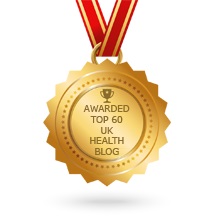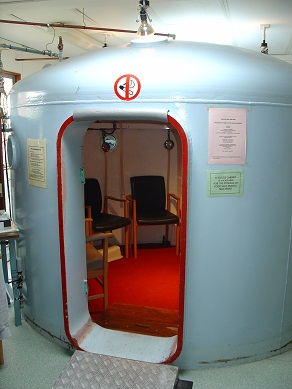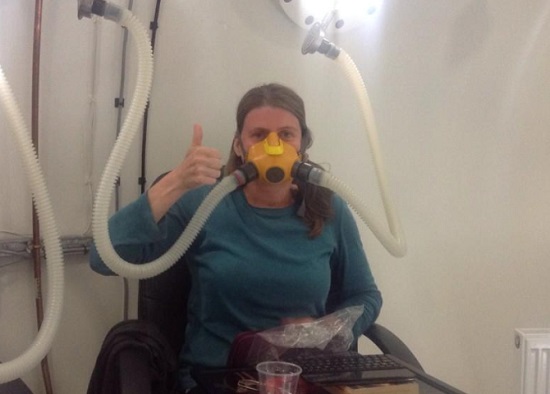This week I’ve been doing something very peculiar. I’ve been diving to great depths, but not the kind of diving that involves water. I’ve just started an intensive month of oxygen therapy at The Chilterns MS Centre in Halton. Before I go any further, I do not have MS but I am very proud to live so close to such an amazing facility for those who do. It is a charity which is very close to my heart for many reasons and a very worthwhile charity to support – the centre at Halton is AMAZING.
Oxygen therapy is becoming more common as a supporting treatment of MS patients. Many see improvements in mobility, fatigue and reduction in pain. I was interested to find out that although 80% of oxygen therapy users at the Chilterns MS Centre have #MS – 20% have a myriad of other conditions including cancer, ulcers, allergies, excema, collitis or sport’s injuries.
The centre runs about 4-5 sessions a day at different levels from P2 (the lowest) to P4 (the highest). You start off at P2 and work your way up, through P3 to P4 which gives the most benefit.
This is a picture of the centre’s old oxygen chamber (must take a new one) but it gives you an idea. About 4 or 5 people sit in a round metal tank with pipes going here there and everywhere and proper Wallace and Grommitt dials. It all looks very technical but the operatives tell me that anyone can learn to operate the oxygen chamber.
You wear a mask which is linked to pure oxygen and you sit in there breathing away for about an hour. It takes a little longer, probably half an hour longer, 15 mins at beginning and end when the chamber is pressurising and de-pressurising.
Most people bring in a book, magazine or kindle but having wifi in the chamber means I can keep up with some emails and work, write blogs (I’m writing this half way through a dive) and also catching up on reading. This week The Other Queen by Philippa Gregory for my book club in case you were interested. I have also been tweeting from the chamber which even joined in a live Twitter Q&A for TalkHealth about skin disease this week. I thought I might be the only person tweeting from an oxygen chamber but I’m not; someone who is using oxygen for MS is also tweeting. Check out @TheMSinME on Twitter if you or someone you know has MS and you’re wondering about how oxygen therapy could help.
So why am I diving each day for a month? Well it’s been something I’ve wanted to do for years but it’s a big committment making the time to go every day for a month. After that I will reduce my treatments to twice a week and then possibly only once a month for a maintenance dose. We shall see. I’m hoping I will see some benefits and the reason I’m doing this is to see if it will help my eczema, asthma and allergies. I have anaphylaxis to some foods (nuts, dairy and soya) and less severe allergies to wheat, celery and tomato. There are also other foods which cause an immune response, eczema flare-up or give me IBS. I also have nodular prurigo which is a particular annoying and unsightly form of eczema where big hard lumps appear which itch like blazes, demand scratching and then proceed to remain infected, angry and bleed forever! I get very run down, have a very dodgy immune system blah blah. I’ll stop the moaning now.
So why oxygen therapy?
My family have quite strong connections with oxygen therapy. My uncle (Thanks for bullying me into finally doing this) Cyril, who used to work in the navy as a deep sea diver has seen the inside of many oxygen chambers in his career. He subsequently used one when he had cancer and is now cured – he is sure the oxygen had a huge part to play in his healing as he stopped taking the prescribed medication due to unpleasant side effects. Anyway to cut a long story short, Cyril got very involved with his local MS Centre in Guildford, helping to operate the chambers and learning more about the amazing qualities of oxygen therapy.
Cyril also knows Dr Philip James and Petra Klimpt who probably know more about the benefits of oxygen therapy than anyone on the planet! I have been lucky enough to have long chats with Philip and really helpful email conversations with Petra, about how it might help me. He has seen my eczema when it’s been pretty bad and has often asked me why I haven’t tried it yet. My only defence has been laziness, workload and I suppose a bit of fear. If it doesn’t work I’d feel like I’d wasted my time and money. No more apathy and delaying. Oxygen therapy is relatively affordable. At the Halton MS Centre, if you book a week in a block it costs just £20 a session. A bargain when I think of how much I’ve spent on potions, cures and other treatments over the years.
What’s involved in a course of oxygen therapy?
Initially it’s advisable to do an intensive 4 weeks course; a one hour treatment every day, every week for a month – that’s 20 sessions. After this you could try reducing to twice a week, then possibly just once a month for a top up. This depends on the person and how well they respond to oxygen therapy.
Petra explained why this method works so well:
“The importance is to do daily 1hr sessions, Mo-Fri for an initial course of 20 sessions. It is a bit like taking oral antibiotics, to get the full benefit we need to take the tablets daily and not spread out over many weeks. Oxygen is our body’s natural antibiotic dealing with inflammation and infection, moreover, we now know that oxygen controls over 8000 genes and a course of 20 sessions increases stem cells eightfold. The key in allergies is to reduce the inflammatory response to the allergens. Many years ago we treated a baby with eczema and he is now a young teenager and the eczema had gone away after the 6 sessions he has had. We have seen psoriasis disappear and also an eczema sufferer with chronic eczema is now eczema free.”
How do you get started with oxygen therapy?
Having oxygen therapy isn’t the sort of thing your doctor will ever recommend. I tried to speak to my deramatologist and doctor about it and whilse neither would fully support it, my doctor has signed the relevant form to say he is aware I’m trying this wacky treatment. I had hoped to be able to get some tests done to benchmark my health and allergy levels before beginning to see if there could be any scientific proof that things had got getter, stayed the same etc. But this wasn’t possible.
There is always the chance that I won’t see any improvement but at least I will have tried it. I am hoping however that I will see a marked reduction in symptoms but only time will tell. Whether that will be down to the placebo effect I shall never know but I’m excited to find out.
It is very easy to get started though.
- Find out where your nearest oxygen chamber is located. You should be able to find your nearest centre here. I joined as a member at my local centre but I don’t think that is a requirement for treatment.
- Visit the centre and find out the procedure for getting treatment
- Inform your doctor that you plan to try oxygen therapy and what for
- Book a session, get fitted for a mask and get diving
After a tour of the centre I signed up for my first week of treatment this week. I book a fortnight in advance and pay at the beginning of each week. Very simple and I have been really impressed with the centre. Many of the staff are volunteers, and all the staff who operate the chamber are voluntary.
“All of the centres are accessed by self-referral because they are charities and not NHS facilities. If you contact the centres directly they will explain to you what paperwork they may have for you to complete. Many still call a form they might ask you to take to your GP to sign a referral form but it is not a medical requirement, it is a notification form only to inform your GP that you are having oxygen treatment. It was introduced when the first centre opened in Dundee in 1982 to educate GPs, give them the chance to contact Philip for further information, hopefully send other patients to the centre, and out of professional courtesy. If your GP decides not to sign it that is fine you have done your duty by informing him/her. The centres are also not a private for profit organisation and, therefore, depend on donations for treatment sessions. Unfortunately, it is extremely rare that anyone accessing one of the charity centres has had the NHS pay for oxygen treatment. Just discuss it with people at the centre, they are always happy to help.”
If you’d like to know the answer to any other questions like:
Why couldn’t you just inhale oxygen from a tank? Why is the chamber better?
How would it work?
What’s it like inside the chamber?
Is it dangerous?
What does it feel like?
Does it hurt?
Can you take your mask off during treatment?
What does a typical treatment involve? What happens?
Join me on my next dive for an oxygen therapy tweetup on Monday 22nd September at 2.30pm and ask me any questions you have. Use the hashtag #AllergyOxygen to get involved.
Please feel free to ask questions on the blog here too. I plan to write weekly updates about the treatment and will answer more questions as I go along.
I think that’s enough for a short introduction. You’ll just have to stay tuned to hear how I get on.
So far I can report I am full of beans, rushing around like mad. My asthma is pretty good though it has been quite stable recently and usually only gets triggered by allergens like dust, cats, dogs etc.
I was VERY itchy, especially during and directly after treatment. Just a coincidence? Nothing to do with the treatment? It could just be the temperature – for the last dive on Friday it was 25 degrees in the chamber which was quite warm. This weekend however I have not been itchy at all. I have also slept so well and woken refreshed. All in all, feeling great. #OxygenTherapyRocks
Further reading:
If you’re interested in finding out more Dr Philip James has written a book, Oxygen and the Brain, and has a detailed website here.
Jane Dean on treating allergies, eczema and more with oxygen therapy on the Foods Matter website.
PS. I would also like to thank Jane and Michael for nagging more than anyone else to try this treatment and helping me get the whole thing moving. ;o)
PPS. You will notice some old blog posts from when I tried this treatment ages ago, at the old Chilterns MS Centre. For various reasons including time, over booking, giving up my slot to proper MS patients etc. I kind of stopped doing the sessions. Glad I’m now back on track though.













Very intrigued with this post on the benefits of oxygen treatment for allergies and eczema – was wondering how it could possibly help so was interested when you said, “Oxygen is our body’s natural antibiotic dealing with inflammation and infection …” It’s a pity that doctors are so reluctant to trust anything even slightly away from normal. Hoping that your oxygen therapy works well and you see remarkable results!
It is intriguing isn’t it? and at just £30 a session (cheaper if you pay in blocks but depends on the centre) it’s a fairly inexepensive thing to try. I have only done two weeks of treatment so far. I will be sharing any changes to my skin, pain levels, nodular prurigo etc. when I’ve finished the intensive sessions. I’m enjoying it though and it is an opportunity to have a bit of ‘me time’ since you can’t do an awful lot inside an oxygen chamber except read or tweet!
Thanks asca, I have eczema too so we shall have to wait and see if this treatment is helpful for me. Fingers crossed and watch this space. If it does work it’s a fairly inexepensive option to try.
I purchased a mild/softshell hyperbaric oxygen chamber about a year ago. Prior to diving in the chamber, I was on an anti-inflammatory diet for 3 years. I ate strictly steamed greens mixed with organic, extra virgin coconut oil and/or organic olive oil. It was a tough diet to follow, but it was the only thing I found that would eliminate psoriasis on my face. I refused to take steroids. I tried multiple supplements and gradual diet elimination before going to the strict greens diet. My goal was to try to heal “leaky gut” (intestinal permeability) which is what I think I have that causes the psoriasis. I experienced success with introducing multiple foods after being on a strictly anti-inflammatory diet for 3 years. I started diving in the chamber when I stopped the strict greens diet and introduced new foods (organic chicken, organic yogurt, fruit, quinoa, organic soups, gluten-free bread, organic cheese, etc.). To test things along the way, I ate pizza which caused a flare. The HBOT (hyperbaric oxygen) healed the flare within a few days. Prior to HBOT, if I ate pizza, it would take 5 to 6 weeks on the anti-inflammatory diet to eliminate the psoriatic skin on my face. The mild chamber is 1.3 ATM (atmospheric pressure) and 4 psi (pounds per square inch). I use an oxygen concentrator which increases oxygen from about 21% to 90-95%. I bought a pre-owned chamber. The first person used it to treat lyme disease for his daughter. He said, interestingly enough, that his daughter’s back acne cleared as well as her lyme disease after treatment in the mild chamber.
Hi there Jitty, apologies for the later reply. I wrote a very long reply and then my ipad lost power, ran flat, and dropped said comment into the ether, never to be seen again. I’m sitting here in the osygen chamber at the MS Centre in Halton just diving down to P4 this morning so I thought this was the perfect time to recreate my reply. I think what you’ve found would follow how I think it has helped me. I certainly itch far less. I had exposure to dust the other day, all across my back from lying on a dusty yoga matt and it wasn’t nearly as painful. Huge whelts came up, and I could feel it, still can today but I have been able to ignore it and not destroy the skin. I get boils on my legs, since doing oxygen therapy I haven’t had a crippling bad one. Sometimes they are so bad my whole leg throbs. None since doing HBOT. My nodular prurigo appears to have almost receded. When I do get some it heals within weeks, where before the lumps would be there for months and months in a continuous itch, scratch, tear off the top, bleed like blazes, itch, scratch cycle. I was forever dabbing at picked NP scabs which bleed and bleed. I have NONE today, apart from a few on my shoulder but they are almost healed and kind of at the disintegration stage. My hair is in amazing condition. My IBS seems to be so much less painful. I still get bloated but it’s less painful and I have far less cramps and flatulence. My bowel movements are also going back to normal which really is a job. So yes, still the odd flare, I have made some nasty gashes last night from a sharp bit of finger nail that I didn’t file down. This would normal turn into nasty yellow crusty scabbed scratches so we shall how quick oxygen can see them off. I honestly think it has made a massive difference to my quality of life. Slowly, not all at once but I am noticing things are able to heal and get back to normal so much faster. Now how on earth did you find your own HBOT? I might start looking on ebay, because what I find hard is getting to the chamber when I want to go, when I can go, fitting it in around work etc. How often do you dive?
Hi Ruth,
Great to hear your positive updates! RE: purchasing my HBOT chamber > I researched HBOT for about a year before I decided to dive in and buy one. At the rate I saw the used ones being purchased, I figured I could buy one and try it out for 4 or 5 months to see if it worked. If it didn’t, then I could resale it for almost what I paid for it. The used chambers are like used cars, they lose a chunk of value after they are purchased new but then basically retain their value at a fair pro-rated amount based on how old it is. I purchased mine via HyperbaricOptions.com I bought a Newtown model with a dual air compressor and an AirSep air compressor. It cost about $7,300 for everything. If I would have bout all the equipment new, it would have cost about $12,500. It only had 154 hours of use on it. When i first started diving, I dove 60 days consecutively for 1 to 1 and a half hours each time. Then I tapered off to every other day and then to a couple times a week. I now try to dive once or twice a week, but I got sidetracked and didn’t dive for a couple of months and my skin around my hairline started to flare, scale and itch. I was quickly reminded that I needed to get back in the chamber. I really like the time in the chamber. It forces me to relax. I oftentimes take a nap or type notes for work in the chamber.
Woops, I meant an AirSep oxygen concentrator. Sorry about that
Woops, I meant an AirSep oxygen concentrator. Sorry about that
Hi Ruth.
Was there a follow up blog on how you went with this treatment? Our daughter has very similar allergies to you and we are interested to hear how it went.
Thanks
Jared
Hi Ruth
Was there a follow up blog on how you went with this treatment? Our daughters condition sounds very similar to your so we are very interested to hear how you went.
Hi Jared, it’s so hard to know what makes a difference but I’m trying to keep doing this once a week. What I’m struggling with is making the time. With a busy job the times the tank is running mean I don’t always manage it. I think I’ve got less boils and NP but it could be down to so many other things like exercise, diet, stress levels, skin care regime. Who knows! Have you got a tank near you?
Oxygen therapy sounds like a good treatment for eczema. I am glad that you decided to try it out, as I am sure that it will help. I know a few people who suffer from eczema, so I will have to pass this along for them to read.
Thanks Silas. It’s by no means a quick fix, nothing ever is. But it certainly seemed to help with general skin health, healing etc.